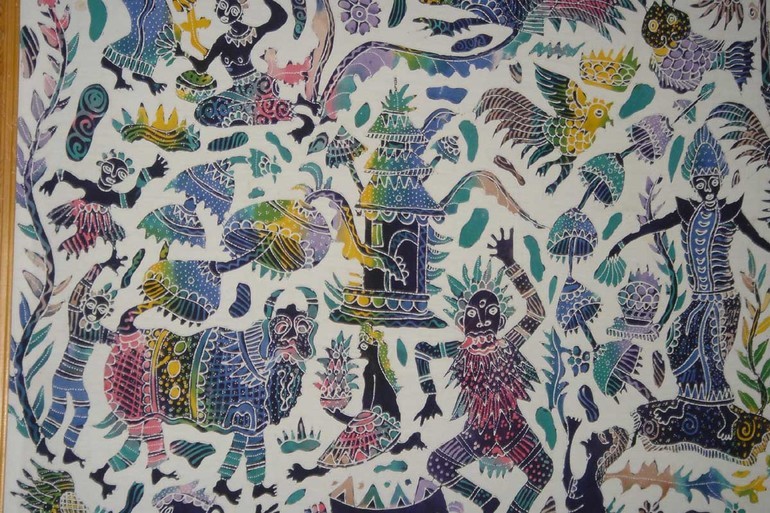Many ancient crafts not only did not lose their relevance in our time, but also a new life. One of them - the Javanese batik. Secrets of the popularity of simple techniques are as graceful figures, careful design and selection of gorgeous colors. Ancient technique of painting on fabrics used even in Sumer and Egypt, but in Indonesia this art reached the highest level. Today Javanese batik is considered the best in the world.

image Features
Patterned batik - is an integral part of Indonesian culture. Local residents, men and women wear multicolored painted cloth wrapped around the waist like a skirt. Cloth sewn on one side, it is called the "sarong", not sewn - "kain batik".
It is not known when the art of drawing on the fabric originated in Java. The most widely used it has acquired in the XVII century. Clothing made of painted materials worn by the nobility and the common people, of which were made the objects of interior.

As the patterns for garments used ornaments, which were divided into 3 groups:
- geometric;
- vegetable;
- supplemented with animal and bird figures.
Interior decorations decorations for mythological subjects. Indonesians believed that the image of the good spirits are able to protect the home from evil. Of particular interest are the following subjects:

- "Ship of the Dead";
- "Tree of Life";
- "Winged temple."
Widespread pattern "Garuda-Savate", depicting the solar eagle Garuda. This motif is part of the image of the national coat of arms of Indonesia.
Old painting has been sustained in beige and brown tones, because at that time masters were known only natural dyes. Tissues were stained with natural materials: leaves of indigo, molasses, lime. Paints were of high resistance and virtually no shedding.
Manufacturing technology
The word "batik" in Russian means "to create from specks." To produce an original picture used tool - "Chanting" which is a copper container with a spout and a thin wooden handle. With it onto the web is applied hot wax. Coloring is carried out in the following sequence:

- On a piece of white silk or cotton is applied to the contour image. Sites that do not need to be painted, covered with wax. It takes many hours of hard work. The treated fabric is dipped into the paint and dried. Natural dyes stained slowly, and coloring occurs by reaction with oxygen, so the fabric repeatedly placed in the ink composition.
- To receive the portion colored in a different color, the wax is scraped off completely or partly and loaded again in the right places. The fabric is dipped in the paint again and dried.
- The process is repeated 20 to 30 times depending on the number of dyes.
Such a manufacturing technique of batik is unique. In order to obtain a piece of size 2.5 x 1.05 m fabric leaves from 10 days to 2 years. production time depends on the characteristics of color combinations and patterns conceived.

Who uses an advanced method of staining - batik cap. Wherein the wax is applied to the fabric with a copper stamp - block of fine wire patterns. It is dipped in wax and pressed tightly to the tissue, then the resulting outline is filled with dyes. Selection of templates is enormous - up to several thousand. This process will allow much to accelerate the production of batik. Similarly, now make up 20 pieces of fabric per day.
The ancient art of batik is considered to be the hallmark of Indonesia. Magnificent designs and colors noble admired by everyone who sees patterned fabrics.



